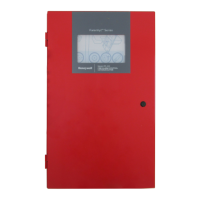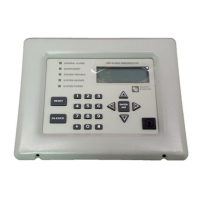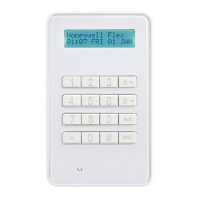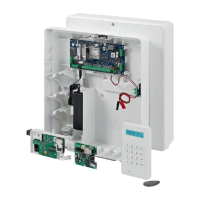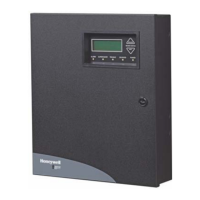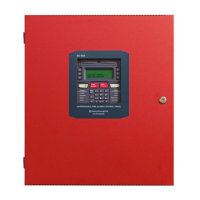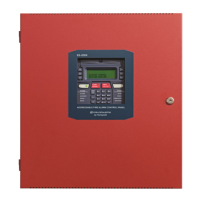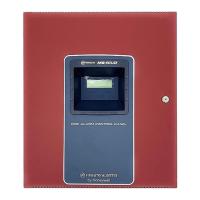66 IFP-75 Series Manual — P/N LS10147-001SK-E:E 4/6/2022
Programming Overview Mapping Overview
7. Select one of the following options from the menu that displays.
7.2 Mapping Overview
Mapping is an important concept with the control panel. In general terms, mapping is assigning or linking events to outputs that should acti-
vate when events occur. You do this by assigning input points to input zones, output points to output groups and then linking or mapping
zones and output groups.
Figure 7.1 is a brief overview of the concept of mapping. The next several pages of the manual show these subjects in detail.
Menu Options Description
1 - Review System Press 1 if you need to review the JumpStart
configuration.
2 - Repeat JumpStart Press 2 if you need to rerun JumpStart for any reason.
3 - Accept Changes
1. If you are ready to make the JumpStart configuration permanent, select 3.
2. The system will prompt you if the installation contains any addressable duct detectors used. If there are none,
select 2 for No and skip to step 8. If the system contains duct detectors, select 1 for Yes and continue with Step 3.
3. From the list that displays, select the SLC that contains the duct detectors.
4. The first photoelectric or ionization detector on the system will display. Select 1 for DUCT and 2 for NonDUCT.
5. Press the up arrow key to select the next detector. Select 1 for DUCT and select 2 for NonDUCT. Continue until you
have selected all duct detectors. (Note: Press the down arrow key to move the cursor backwards through the list).
6. When you reach the last detector on this device, press the left arrow key.
7. The system will ask you if there are any duct detectors used. If there are, select 1 for Yes and the message, “Have
All Addressable Duct Detectors Been Identified?” prompts. Press the left arrow key to select “No” or press the right
arrow key to select “Yes”. If there are no more duct detectors, continue to Step 8.
8. The system will restart with the saved JumpStart configuration.
9. After the system resets, it will use the new JumpStart configuration.
4 - Discard Changes If you want to discard the changes, and keep the configuration you had before running this JumpStart, press 4.
Table 7.1 JumpStart Menu Options
In its simplest application, mapping determines which outputs are activated by which inputs.
input zone output group
input points
(SLC devices)
output points
(NAC circuits)
Input zones are mapped by event type to output groups. Cadence
patterns are assigned as part of the mapping information. Up to eight
groups/patterns can be selected for each event.
input points
(SLC devices)
input zones
cadence
patterns
output groups
output points
(NAC/relay ckts)
Output points are assigned
to output groups only.
system trbl & special
system events
optional
Figure 7.1 Mapping Overview
NOTE: Mapping cannot be programmed through the annunciators. It can only be programmed through the HFSS Honeywell Fire Software
Suite.

